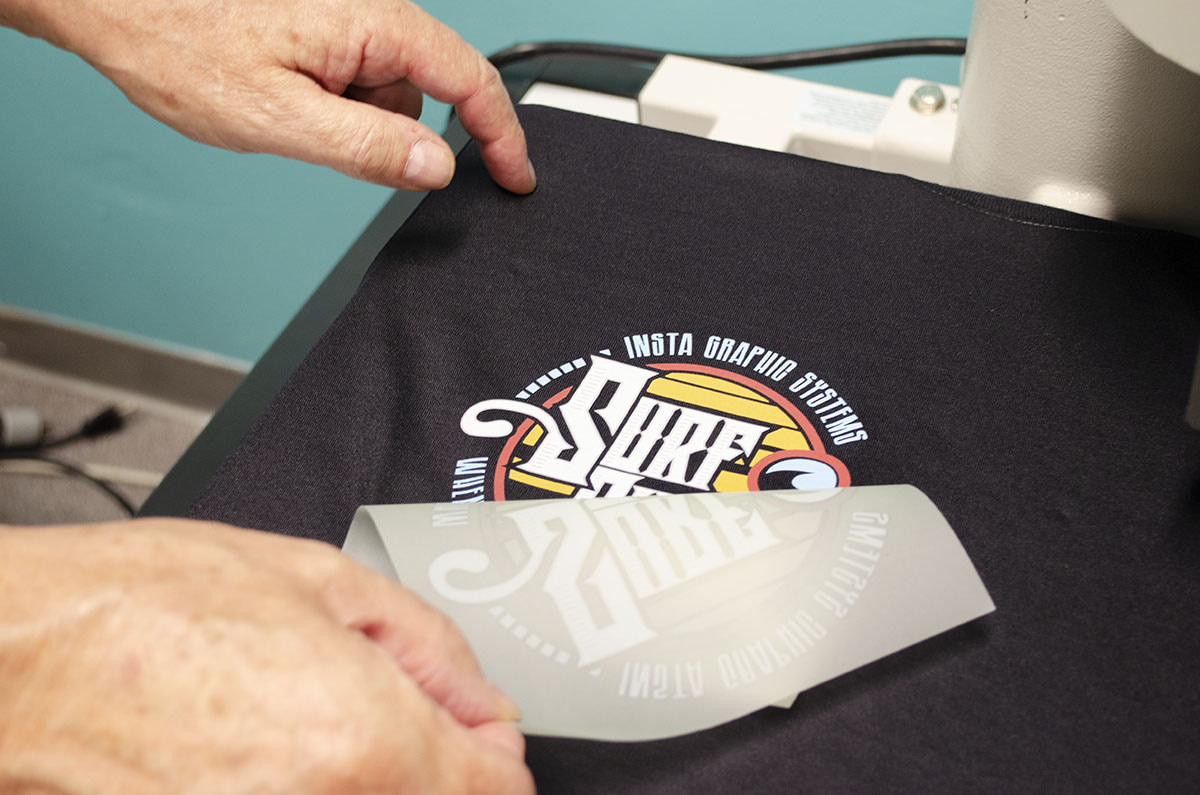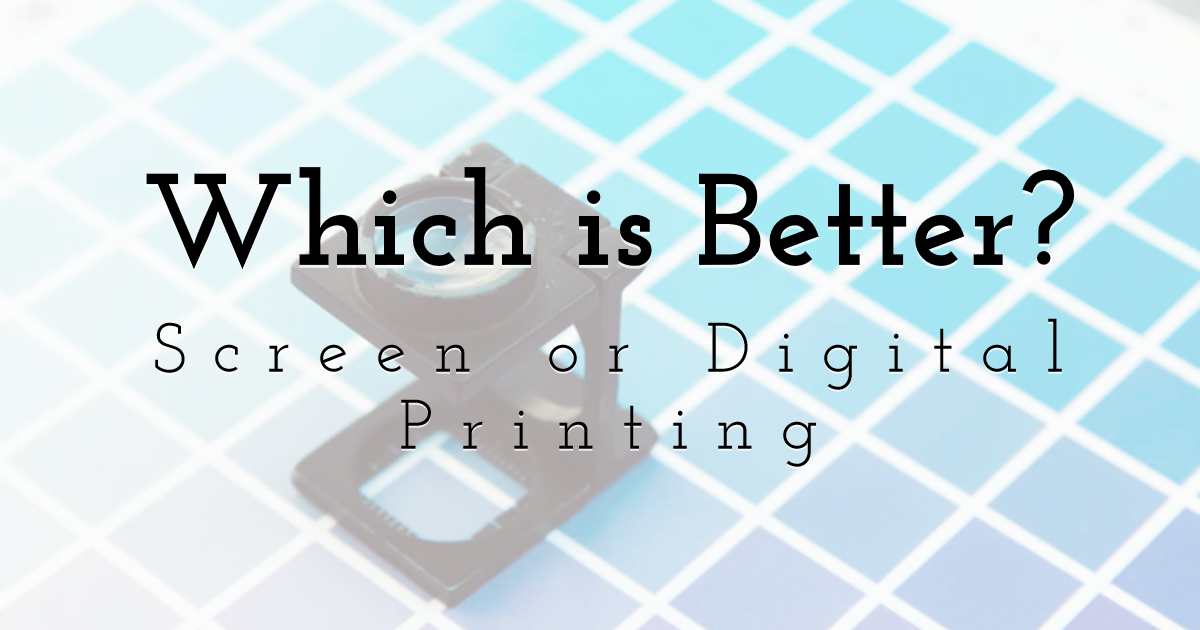4 Simple Techniques For Tx Tees
4 Simple Techniques For Tx Tees
Blog Article
How Tx Tees can Save You Time, Stress, and Money.
Table of ContentsWhat Does Tx Tees Mean?The Buzz on Tx TeesThe Best Guide To Tx TeesThe Ultimate Guide To Tx TeesThe Facts About Tx Tees UncoveredThe smart Trick of Tx Tees That Nobody is Talking AboutAbout Tx Tees
Add up other costs, like the number of energies it takes to run the store and the expense of ink and solution per design. Take the print below.The solution ought to only be a few cents because you 'd just require to coat one screen for this work. Exactly how much should you charge per tee shirt to make a profit? Typically, printers try to make up to 45% earnings on a print task. Right here's a table to assist you determine that: overall price per item percent of preferred profit as a decimal (instance:.25 or.45) profit made per product per work Now let's speak about the earnings of DTF.

With DTF, you can publish a handful of shirts, or simply one. Both screen printing and DTF have their specific niches in the world.
Not known Details About Tx Tees
The very best method to understand? Ask around and see what print shops like your own are doing. embroidery shop. Try both out and see which you like better
When you're picking what sort of printing method to use for printing your artwork designs on your garments, it is necessary that you understand the distinctions between these 2 methods so you can maximize results while lessening prices. Display printing is the most typically used method for publishing layouts on textiles.
DTG printing is likewise referred to as spot or direct to garment printing due to the fact that it prints just what is needed as opposed to making a display as display printers do. https://myanimelist.net/profile/txtees02. Screen printing functions by screen filler squeegee display printing ink display mesh screen, after that moving the photo to garment making use of warm and/or stress
The DTG printer makes use of special dye-sublimation inks that are applied right into a pre-designed picture by a digital printing system. The inks enter into the fabric, permitting vibrant shades and exceptional detail. It's additionally called spot or direct to garment printing since it publishes just what is needed rather of making a screen as screen printers do.
The smart Trick of Tx Tees That Nobody is Talking About
First, it's much faster - you can publish a fullcolor picture in minutes, in contrast to hours for screen printing. Second, there's no established time or prices involved - you can print any type of layout you such as, without having to produce a display first. Third, there's no waste - since screen printers display print one style at a time, they have to evaluate each shade individually.
The paper is really expensive and can only be utilized once. Once it's printed on, it has actually to be thrown out. - The initial acquisition cost is lower than the ahead of time investment of DTG printers- You can publish multi-color styles one display each time as opposed to having to print each color separately like DTG printing.

More About Tx Tees
Instead of using display mesh as screen printers do, dye sublimation printers utilize laser modern technology to transfer your images onto garments or paper. A warm process moves the dye from its solid-state straight into the gas phase which in turn merges it onto fabric substratums when they are swiftly heated to heats under high stress.
Sublimation printing is environment-friendly. It uses less water than screenprinting, and since it doesn't include making use of harmful solvents, it's safe for all sorts of garments. The dye sublimation inks are additionally odor-free when healed, unlike display printers that use unsafe chemicals during the screen printing process that leave an unpleasant odor.
They additionally save cash on expensive devices like exposure devices considering that dye sublimation printers do not require a UV exposure unit or a flash treatment stove that is commonly used in screen printing (custom cap printing). What is straight to garment printing (DTG Printing)? DTG printing is an electronic screenprinting process that prints directly onto fabric using specialized inkjet printers
Unknown Facts About Tx Tees
DTG printing offers several advantages over typical screenprinting, including the capability to print photographic quality pictures, greater shade vibrancy, and the ability to publish designs on darker fabrics. DTG printers function by heating the textile ink till it becomes a gas. The gas after that penetrates the material, bonding with the fibers to develop an irreversible print.

Screen printers just prepare their screen then start printing until they run out of product or ink.- There is a vast array of seasoned display printers around the globe, which can be practical for beginners. - It's a slower process - display printers commonly need to wait on the ink to dry prior to they can publish the next shade- you could check here Display printers call for hands-on labor, so there's a higher knowing contour and it takes longer to create a high-quality design- Display printing isn't as exact as DTG printing, so you may obtain some "blood loss" of colors from one component of the photo onto another if not done properly.
Fascination About Tx Tees
Rather of utilizing screen mesh as display printers do, dye sublimation printers make use of laser innovation to transfer your photos onto garments or paper. A heat process transfers the color from its solid-state straight into the gas phase which consequently integrates it onto textile substratums when they are quickly warmed to high temperatures under high stress.
Sublimation printing is green. It utilizes less water than screenprinting, and due to the fact that it does not entail making use of hazardous solvents, it's safe for all kinds of clothing. The dye sublimation inks are likewise odor free when healed, unlike screen printers that make use of hazardous chemicals throughout the display printing process that leave an undesirable smell.
They additionally conserve money on expensive equipment like direct exposure units since color sublimation printers don't need a UV direct exposure unit or a flash remedy stove that is generally used in display printing. What is straight to garment printing (DTG Printing)? DTG printing is a digital screenprinting process that publishes straight onto textile making use of specialized inkjet printers.
Some Known Facts About Tx Tees.
DTG printing offers many advantages over conventional screenprinting, including the capability to publish photographic top quality pictures, better shade vibrancy, and the capability to print layouts on darker materials. DTG printers function by warming the textile ink up until it becomes a gas. The gas then penetrates the textile, bonding with the fibers to produce a permanent print.
Report this page